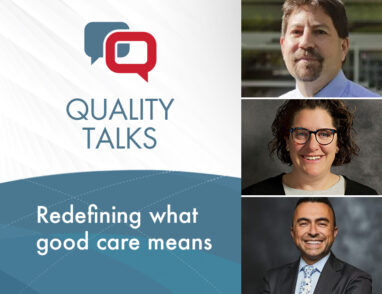Review These Resources for Treating Alcohol Use Disorder (Includes Free CME Course)
April 29, 2021 · Matt Brock
Unhealthy alcohol use is a common and serious issue, ranging from risky drinking to alcohol dependence. Unhealthy alcohol use occurs on a spectrum. About 26% of adults in the United States report that they engage in “risky or hazardous drinking”—drinking more than the recommended limits for daily, per occasion or weekly amounts—resulting in increased risk for health consequences.
 Unhealthy alcohol use is the third leading preventable cause of death in the U.S.; every year an estimated 88,000 people (approximately 62,000 men and 26,000 women) die from alcohol-related causes. Short-term morbidity related to unhealthy alcohol use includes unintended injuries, risky behaviors and violence, and numerous long-term outcomes including chronic conditions such as brain damage, cancer, liver disease, cardiovascular disease, fetal alcohol syndrome and mental health conditions. Many—if not most—of the consequences to the population occur in people who are drinking at unhealthy levels but have not been diagnosed with an alcohol use disorder (AUD).
Unhealthy alcohol use is the third leading preventable cause of death in the U.S.; every year an estimated 88,000 people (approximately 62,000 men and 26,000 women) die from alcohol-related causes. Short-term morbidity related to unhealthy alcohol use includes unintended injuries, risky behaviors and violence, and numerous long-term outcomes including chronic conditions such as brain damage, cancer, liver disease, cardiovascular disease, fetal alcohol syndrome and mental health conditions. Many—if not most—of the consequences to the population occur in people who are drinking at unhealthy levels but have not been diagnosed with an alcohol use disorder (AUD).
Treatment of alcohol misuse currently focuses on addressing alcohol dependency and not on at-risk drinking; however, the prevalence of risky drinking is much higher than for more severe disorders. In general, people tend to wait until their condition is very severe before they seek medical

assistance. Heavy drinkers who have not had a “crisis” may not seek assistance with alcohol cessation if they do not perceive that their condition is severe enough.
Unhealthy alcohol use is costly. Binge drinking is estimated to cost the U.S. economy $191 billion annually. Conversely, screening and follow-up for unhealthy alcohol use is cost effective.6 Increasing screening, follow-up and appropriate treatment for patients with unhealthy alcohol use and AUD saves money and improves patient outcomes.
The Patient Perspective
NCQA spoke with people in recovery from unhealthy alcohol use and AUD to hear how they recognized their drinking problem and sought treatment, and how they are managing their recovery.
Patient Stories: Unhealthy Alcohol Use and Alcohol Use Disorder
The Resources
NCQA provides education for primary care providers, produced a change packet after convening a learning group and tracks and reports data on HEDIS measures related to unhealthy alcohol use.
Training: Improving Patient Outcomes for Unhealthy Alcohol Use and AUD
This free CME course will provide health care professionals with the education needed to facilitate proper screening, follow-up and treatment for unhealthy alcohol use and AUD. It will also educate participants on the capability of telehealth to effectively engage patients, improve outcomes and reduce disease burden.
Learning Collaborative: Unhealthy Alcohol Use Screening and Follow Up
With funding from the Centers for Disease Control and Prevention and the Substance Abuse and Mental Health Association, NCQA has been working to improve the quality of care and health plan reporting of the HEDIS Unhealthy Alcohol Use Screening and Follow Up measure through a Learning Collaborative that met regularly with health plans, experts, patient partners and other stakeholders to produce a Change Package outlining best practices and lessons learned.
HEDIS Measure: Unhealthy Alcohol Use Screening and Follow-Up
The percentage of members 18 years of age and older who were screened for unhealthy alcohol use using a standardized tool and received appropriate follow-up care if they screened positive. Two rates are reported.
HEDIS Measure: Identification of Alcohol and Other Drug Services (IAD)
This measure summarizes the number and percentage of members who had a service for alcohol and other drug (AOD) abuse or dependence (i.e., a claim with both a diagnosis of AOD abuse or dependence and a specific AOD-related service) during the measurement year.
Assesses adults and adolescents 13 years of age and older with a new episode of AOD dependence.
Assesses emergency department (ED) visits for members 13 years of age and older with a principal diagnosis of AOD abuse or dependence, who had a follow-up visit for AOD.








